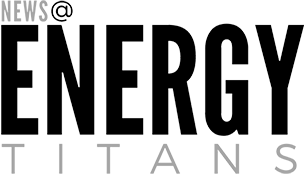Cold, still and overcast: can Europe’s renewables cope with Dunkelflaute?
Some 75 kilometres off the coast of Germany, the 50 foundations of the Baltic Eagle wind farm are among the latest signs of Europe’s push for green energy.
Installed last year, the platforms — which have just received their first turbine — are part of a joint venture between Iberdrola, the Madrid-listed energy giant, and Masdar, the UAE’s clean energy company. The 476-megawatt project should be capable of supplying up to 475,000 homes, marking one small step towards Europe’s clean energy goals.
Yet, as wind turbines and solar farms are rolled out at pace, policymakers and energy experts are also focusing on another piece of the puzzle: working out how to fill the energy gap during periods of low wind and little sunlight — or Dunkelflaute, as they are known in energy circles, using the German term.
Analysis by the International Energy Agency shows that roughly five or six times over the past 30 years, cold spells with little wind have affected large parts of Europe for a week or more, including areas where most onshore and offshore wind projects are located. The analysis covered the EU, UK, Nordic countries, several Balkan countries and Ukraine.
“We recognise that climates are changing, so how often these will occur is a bit hard to know,” says Brent Wanner, head of the power sector unit at the IEA, which advises member nations on energy security. “But being ready for these kinds of periods should be part of the planning.”

Europe’s electricity system is set to change profoundly over the coming decades. Modelling by the think-tank Agora Energiewende suggests that, under national targets, 96 per cent of Europe’s electricity will come from renewable sources, mostly wind and solar, by 2050. That compares with around 44 per cent now.
The continent will also become more reliant on electricity as households switch from petrol to electric cars and from gas-fired boilers to electric heat pumps. Electricity could meet up to 70 per cent of Europe’s final energy demand by 2050, the modelling shows, compared with just over 20 per cent now.
Managing periods of low wind and sun without resorting to unabated fossil fuels is likely to require, among other things, a step change in electricity storage, so that it can be banked when the wind and sun are strong and deployed when they are not. Wind and solar farms in Europe and the UK are currently frequently asked to switch off if they are producing more than the grid can take.
Pumped storage hydropower — where water is pumped up to a reservoir and then discharged when needed to drive a turbine — is considered by the IEA to be the “most efficient and cost-effective” way available currently of storing energy over long periods of time.
Yet the technology is limited by geography and vulnerable to drought. One option policymakers are looking at is hydrogen as a form of storage: using electrolysis to split hydrogen from water when the wind and sun are strong, storing the hydrogen, and turning it back into electricity when the wind drops by using it to fuel a power station.

However, this process is highly inefficient, with potentially 70 per cent of the electricity lost along the way. In addition, low carbon hydrogen is likely to be in stronger demand from industries with few other ways to cut their emissions, such as fertiliser manufacture or steelmaking.
“Once the hydrogen is made, it’s a very valuable molecule to have made, and can be used to decarbonise the most difficult to decarbonise areas first,” explains Caroline Still, project leader at Aurora Energy Research in the UK.
Hydrogen can also be made by splitting it from natural gas, and there is growing interest in deposits of hydrogen underground. But the natural gas process releases carbon dioxide that needs to be captured and stored if it is not to contribute to climate change, while the extent of geological deposits is not yet clear.
These constraints mean hydrogen’s role in power generation may end up being limited. Aurora forecasts that, overall, electricity generated by hydrogen will account for about 3 per cent of European power generation in 2050, in a scenario where the region meets its target to cut carbon emissions to net zero.
In a boost to the market, in February, the German government announced plans to subsidise power plant owners to develop up to 10GW of power stations able to run on hydrogen. “We need [ . . .] modern and highly flexible climate-friendly power stations,” the government said in a statement.
And, at the end of April, the European Commission awarded nearly €720mn to seven projects aiming to produce “green hydrogen” — the type made through renewably powered electrolysis — helping to develop the industry.
There have also been setbacks, though. Earlier this year, Engie, the French state-backed utility, pushed back its target to develop 4GW of hydrogen projects from 2030 to 2035.
It argued that the “development and structuring [of the market] is slower than what was envisaged a year ago”.
James Forrest, global industry leader for energy transition and utilities at consultancy Capgemini, notes that enthusiasm for developing low carbon hydrogen has “faded a bit” over the past year — in part due to high costs. “It’s too expensive and uncompetitive,” he says.
Matthias Buck, Europe director at Agora Energiewende, believes that, given its challenges, hydrogen will face competition from other storage technologies, with several companies working on developing batteries so they can run for longer periods of time, and new ways to store heat.
“There’s a very clear interest in developing new long-term storage solutions for power which are cheaper than the hydrogen route,” he says. “I am confident that, by the time we reach 2040-2045, we will have new things on the market that we don’t yet see.”
He argues that the growing number of electricity cables allowing countries to export and import power will also help the system to cope. “It’s likely that, if you have a Dunkelflaute over the North Sea, you would have plentiful renewable production in other areas,” he says.
But he notes that, while there is “no need to fear Dunkelflaute”, provided the continent’s power system is set up appropriately, this will not happen by itself.
“The question is: do we have the right things on the policy and administrative level to get there?” he asks. “I would say at European level the homework is mostly done. It’s about making it concrete, in the regional context.”



